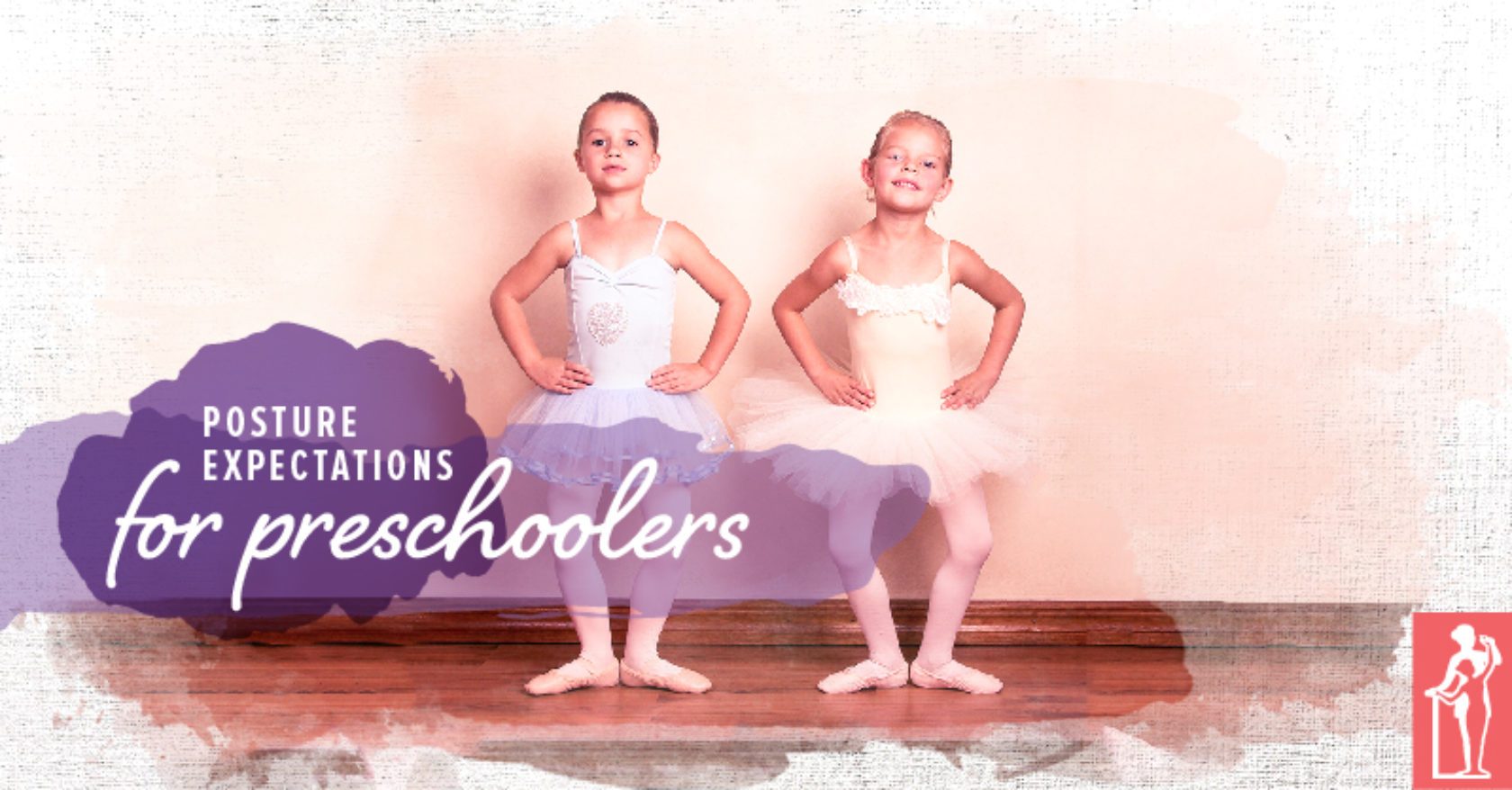
Our young dancers are an energetic and exhilarating challenge. Their little minds and bodies are experiencing so many changes on a daily basis, and their minds are soaking up
so much as they grow. Teachers of preschoolers have to be aware of the inputs they are receiving, and be able to adjust their expectations when it comes to certain aspects of ballet technique. Today we explore the expectations that are realistic and safe for our preschool age students in the area of ballet posture.
What Does Good Posture Look Like in a Preschooler?
For age three to four, good posture consists of:
- Being able to stand without falling down.
- Standing with weight even on both feet, and feet parallel or nearly so.
- Head centered over shoulders, and held erect.
- Arms relaxed at sides.
- Shoulders and hips level and square, or nearly so.
- Knees natural. Somewhat relaxed, nearly straight but not “pulled up.”
- Tummy and seat muscles at ease.
You will find that even these seven expectations can be
very difficult for some of your preschool students. I will often pause in the middle of class and focus on accomplishing several of these at a time for a few minutes. We sometimes play “Let’s be frozen, like Anna!” for up to a minute, where they must stand
totally still and tall on their spots. Those 15-60 seconds sometimes pass excruciatingly slow, but by doing this, those students are learning to
implement all seven of these posture requirements at once. I recommend practicing for a short time every class until they get it.
Should I Correct Their Posture?
Most posture errors at this age are developmental. They will disappear as the child grows and the muscles controlling balance and symmetry strengthen. It is important that
specific posture alignments not be corrected by the dance teacher at this age.
Instead,
encourage symmetry in appearance and action. Ask students to
stand tall and even. Use many activities that use the two sides of the body equally. Encourage the child to learn to use both legs in such things as hopping and galloping.
Do not require perfection, just a sufficient amount of effort.
They’re Frustrated, Too!
Realize that sometimes the child’s muscles
just don’t do what is asked of them. And, sometimes the child has not discovered
how to get his or her muscles to do some things. This can be frustrating for them, and may cause them to act out or become seemingly disinterested in the ballet lesson.
It helps to ask them to do things that they
can do. Children can be asked to “stand tall”, and to “reach up high” to encourage
an awareness of posture. Set aside the ballet dancer inside yourself, and let go of the pursuit of perfection momentarily. Talk about
what it feels like to stand tall or have even balance on both feet with them. Have good
energy and excitement in your voice.
It also helps to use
imaginative imagery:
“Good posture is like a lovely rose growing in the garden. Our legs are like the roots. They reach down into the ground to hold the rose bush in place. Our head is like the lovely rose that grows up towards the sky.”
Posture Corrections That Should Wait Until the Child is Older
- Pulling in the stomach should not be attempted by children under seven as the spine is too short in comparison to the viscera. If forced, it will cause incorrect muscle development in the lower back.
- Tucking the seat in. Again, this will cause incorrect muscle development in the lower back.
- Pulling up the knees. This will cause an overdevelopment of the thigh muscles, and a weakening of the hamstrings and knee joints. This can also cause the knees to become more sway backed.
Save most of the technical corrections for later. Let them move! Let them have fun! Let them grow!
Related Articles

Related
 Our young dancers are an energetic and exhilarating challenge. Their little minds and bodies are experiencing so many changes on a daily basis, and their minds are soaking up so much as they grow. Teachers of preschoolers have to be aware of the inputs they are receiving, and be able to adjust their expectations when it comes to certain aspects of ballet technique. Today we explore the expectations that are realistic and safe for our preschool age students in the area of ballet posture.
Our young dancers are an energetic and exhilarating challenge. Their little minds and bodies are experiencing so many changes on a daily basis, and their minds are soaking up so much as they grow. Teachers of preschoolers have to be aware of the inputs they are receiving, and be able to adjust their expectations when it comes to certain aspects of ballet technique. Today we explore the expectations that are realistic and safe for our preschool age students in the area of ballet posture.


Comments
No comments for this post.
Add Comment